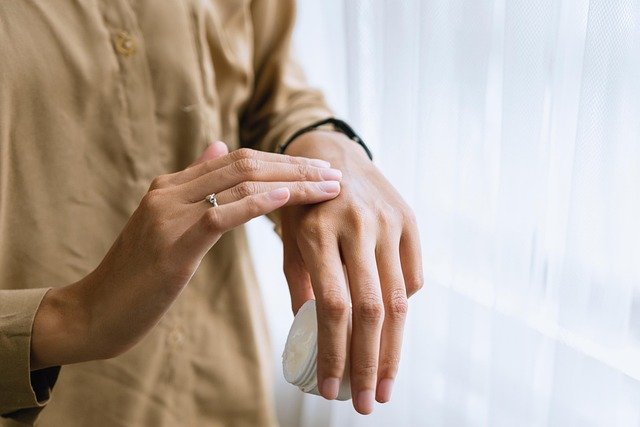Skin Fasting: The Minimalist Approach to Skincare
In a world inundated with multi-step skincare routines and endless product recommendations, a counterintuitive trend is emerging that challenges everything we thought we knew about maintaining healthy skin. Skin fasting, a practice that involves temporarily eliminating or drastically reducing skincare products, is gaining traction among beauty enthusiasts and dermatologists alike. This minimalist approach to skincare promises to reset the skin's natural balance, improve its self-regulating abilities, and potentially save both time and money. As the beauty industry continues to evolve, skin fasting represents a paradigm shift in how we think about skin health and care.

The practice draws parallels with intermittent fasting in nutrition, where periods of abstinence from food are believed to reset metabolic functions and improve overall health. In the case of skin fasting, the goal is to allow the skin to recalibrate its natural processes without the influence of external products.
The Science Behind Skin Fasting
While scientific studies specifically on skin fasting are limited, the concept is grounded in dermatological principles. The skin is a complex organ with its own regulatory mechanisms, including sebum production, cell turnover, and moisture retention. Proponents of skin fasting argue that constant use of skincare products can disrupt these natural processes, leading to dependency and potentially weakening the skin’s barrier function.
Dr. Zoe Draelos, a consulting professor of dermatology at Duke University, explains that overuse of products can sometimes lead to skin sensitivity and irritation. By temporarily removing these products, the skin may have an opportunity to rebalance itself. Additionally, dermatologists have long recognized that some skin conditions improve with a reduction in product use, particularly in cases of contact dermatitis or overexfoliation.
Methods and Approaches to Skin Fasting
Skin fasting can take various forms, depending on individual skin types and concerns. Some practitioners advocate for a complete elimination of all skincare products for a set period, typically ranging from 12 hours to several days. Others suggest a more gradual approach, where products are eliminated one by one over time.
A popular method is the “nighttime fast,” where individuals skip their evening skincare routine, allowing the skin to rest overnight without any product interference. This approach is often considered more manageable and less daunting for those new to the concept.
For those with specific skin concerns or conditions, modified fasting approaches may be more appropriate. For instance, individuals with acne-prone skin might continue using a gentle cleanser while eliminating other products. Those with dry or sensitive skin may opt for a partial fast, reducing product use rather than eliminating it entirely.
Benefits and Potential Drawbacks
Advocates of skin fasting report numerous benefits, including improved skin texture, reduced oiliness, and a more radiant complexion. By allowing the skin to regulate its own moisture and oil production, some individuals find that their skin becomes more balanced and less prone to issues like excessive dryness or oiliness.
Another potential benefit is increased product efficacy. After a period of skin fasting, the skin may become more receptive to active ingredients in skincare products, potentially enhancing their effectiveness when reintroduced.
However, skin fasting is not without its critics. Some dermatologists caution that completely eliminating essential skincare steps, such as sun protection, can be harmful. Additionally, individuals with certain skin conditions may find that discontinuing prescribed treatments leads to flare-ups or worsening of symptoms.
Skin Fasting in the Context of Modern Skincare
The rise of skin fasting reflects a broader trend towards minimalism and sustainability in the beauty industry. As consumers become more aware of the environmental impact of excessive product consumption, practices that promote using fewer products are gaining popularity.
This trend also challenges the traditional beauty industry model, which often relies on selling multiple products for different concerns. Skin fasting encourages a more mindful approach to skincare, prompting individuals to question whether each product in their routine is truly necessary.
Implementing Skin Fasting: Tips and Considerations
For those interested in trying skin fasting, it’s important to approach the practice thoughtfully. Dermatologists recommend starting with a shorter fasting period, such as 12-24 hours, and gradually increasing the duration if desired. It’s crucial to listen to your skin and discontinue the fast if any adverse reactions occur.
When reintroducing products after a fast, it’s advisable to do so gradually, starting with the most essential items like sunscreen and gentle cleansers. This process allows for careful observation of how each product affects the skin, potentially leading to a more streamlined and effective skincare routine.
For individuals with specific skin concerns or those using prescription treatments, consulting with a dermatologist before attempting skin fasting is strongly recommended. They can provide personalized advice on how to safely incorporate fasting into an existing skincare regimen.
As the beauty and wellness industry continues to evolve, practices like skin fasting challenge us to rethink our approach to skincare. While not a one-size-fits-all solution, this minimalist trend offers an intriguing alternative to product-heavy routines, encouraging a deeper understanding of our skin’s natural capabilities. As with any skincare trend, the key lies in finding a balance that works for individual skin types and lifestyles, always prioritizing overall skin health and well-being.





